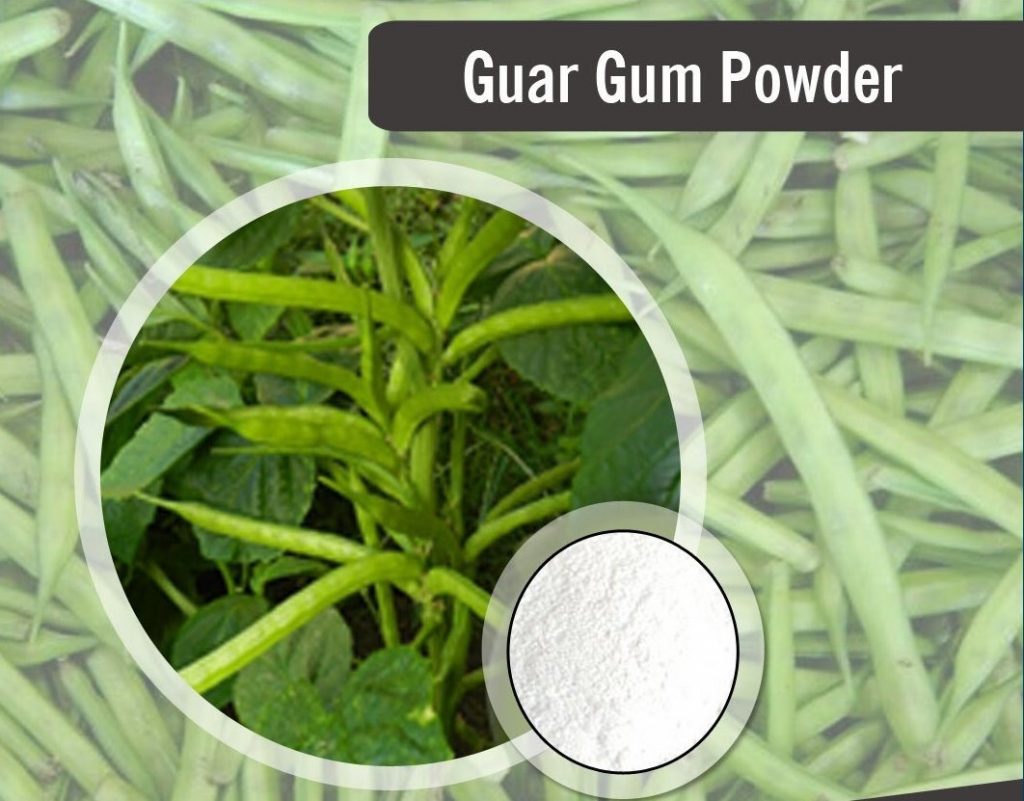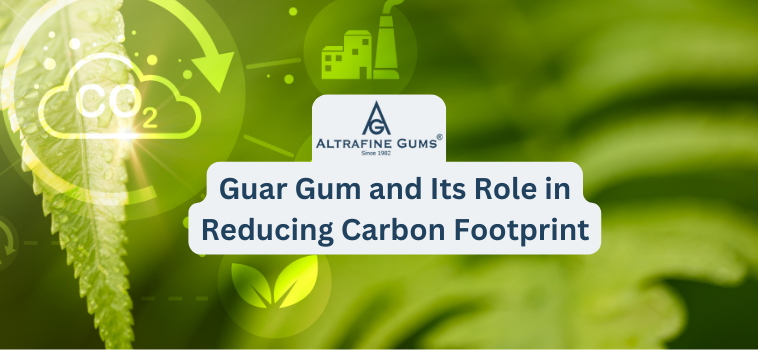In today’s era of environmental awareness, industries worldwide are seeking solutions to minimize their carbon footprint. Guar gum, a natural polysaccharide derived from the guar plant, has emerged as a sustainable alternative that not only reduces emissions but also contributes to energy-efficient production practices.
With its versatile applications in eco-friendly products, guar gum is revolutionizing the way industries approach sustainability.
Understanding the Carbon Footprint of Manufacturing
Before exploring how guar gum mitigates environmental impact, it’s crucial to understand the concept of a carbon footprint. A carbon footprint refers to the total greenhouse gas (GHG) emissions produced directly or indirectly by human activities.
Industries, particularly those relying on petroleum-based additives, contribute significantly to these emissions. Guar gum offers a natural alternative to synthetic chemicals, helping industries transition toward low-emission practices.
1. Guar Gum as an Eco-Friendly Alternative
Guar gum’s role as a substitute for petroleum-based additives is central to its ability to lower carbon emissions. Its natural origin and renewable production cycle make it a game-changer in sustainable manufacturing.
Reducing Petroleum Dependency
- Replacement of Synthetic Polymers: In industries such as food, cosmetics, and textiles, guar gum replaces petroleum-based thickeners and stabilizers. This shift not only reduces reliance on fossil fuels but also minimizes the emissions associated with extracting and processing these resources.
- Non-Toxic Decomposition: Unlike synthetic additives that persist in the environment and emit harmful gases upon degradation, guar gum is biodegradable and decomposes naturally without releasing toxins.
Case Studies in Green Manufacturing
- Food Industry: In processed foods, guar gum serves as a natural emulsifier, stabilizer, and thickener, eliminating the need for carbon-intensive synthetic additives.
- Textile Printing: Its use as a thickening agent in dye pastes reduces the environmental impact of textile production by replacing petroleum-derived alternatives.

2. Energy Efficiency in Guar Gum Production
One of guar gum’s standout features is its low energy consumption during cultivation and processing. From field to factory, guar gum’s production process is significantly more energy-efficient than synthetic chemical manufacturing.
Cultivation Phase
- Low Resource Requirements: Guar plants thrive in semi-arid regions with minimal water, fertilizers, and pesticides. This reduces the energy footprint associated with large-scale agriculture.
- Carbon Sequestration: As a leguminous crop, guar plants fix nitrogen in the soil, improving soil health and capturing carbon from the atmosphere.
Processing Phase
- Minimal Energy Usage: Guar gum is processed through mechanical methods such as dehusking, grinding, and sieving, which require less energy than the chemical synthesis of synthetic additives.
- Localized Production: Guar gum is often processed near cultivation areas, reducing transportation emissions and promoting energy efficiency in the supply chain.
3. Sustainable Applications of Guar Gum
Beyond replacing synthetic additives, guar gum finds applications in innovative, sustainable solutions, further contributing to reducing the carbon footprint.
Biodegradable Packaging
As industries move toward eco-friendly packaging solutions, guar gum is playing a pivotal role:
- Paper and Cardboard Production: Guar gum acts as a natural binder and strengthener, enabling the production of durable, biodegradable packaging materials.
- Water-Resistant Coatings: It is used in biodegradable coatings that protect packaging from moisture without relying on plastic or synthetic alternatives.
Renewable Energy Systems
Guar gum’s unique properties are being harnessed in the renewable energy sector:
- Biofuel Production: Guar gum is used as a thickening and stabilizing agent in biofuel formulations, improving efficiency and reducing the carbon emissions associated with production.
- Hydropower Systems: In hydropower, guar gum enhances the viscosity of drilling fluids used in constructing tunnels and reservoirs, enabling energy-efficient operations.
The Bigger Picture: Guar Gum and Global Sustainability
The adoption of guar gum aligns with global efforts to mitigate climate change and transition to a low-carbon economy. Its integration into various industries supports multiple Sustainable Development Goals (SDGs):
- Goal 12: Responsible Consumption and Production: Promotes sustainable manufacturing practices and reduces reliance on finite resources.
- Goal 13: Climate Action: Reduces GHG emissions through energy-efficient production and biodegradable alternatives.
- Goal 15: Life on Land: Encourages sustainable agricultural practices and minimizes land degradation.
Conclusion
Guar gum’s role in reducing carbon footprint extends beyond its biodegradable nature. By replacing petroleum-based additives, promoting energy efficiency in production, and finding applications in sustainable solutions like biodegradable packaging and renewable energy systems, guar gum is a powerful ally in the fight against climate change.
For industries seeking to embrace eco-friendly practices, guar gum offers a proven path to sustainability. By integrating guar gum into manufacturing, companies can significantly reduce their environmental impact and contribute to a greener future.
Explore premium guar gum products tailored for sustainability at Altrafine Gums, a trusted leader in delivering quality solutions for eco-conscious industries.
Frequently Asked Questions About Guar Gum
Q1. How does guar gum help reduce carbon emissions?
A: Guar gum replaces petroleum-based additives, eliminating the emissions associated with extracting and processing fossil fuels. Its natural and energy-efficient production process further reduces carbon output.
Q2. What makes guar gum more energy-efficient than synthetic chemicals?
A: Guar gum production involves mechanical processes such as grinding and sieving, which consume less energy compared to the chemical synthesis required for synthetic additives.
Q3. Can guar gum be used in packaging to reduce plastic waste?
A: Yes, guar gum is used in biodegradable packaging as a natural binder and coating, providing a sustainable alternative to plastic.
Q4. How does guar gum contribute to renewable energy systems?
A: Guar gum is used in biofuel formulations and hydropower operations to improve efficiency and reduce resource consumption.
Q5. Is guar gum cultivation eco-friendly?
A: Absolutely. Guar plants require minimal water, improve soil health through nitrogen fixation, and have a low environmental footprint during cultivation.


